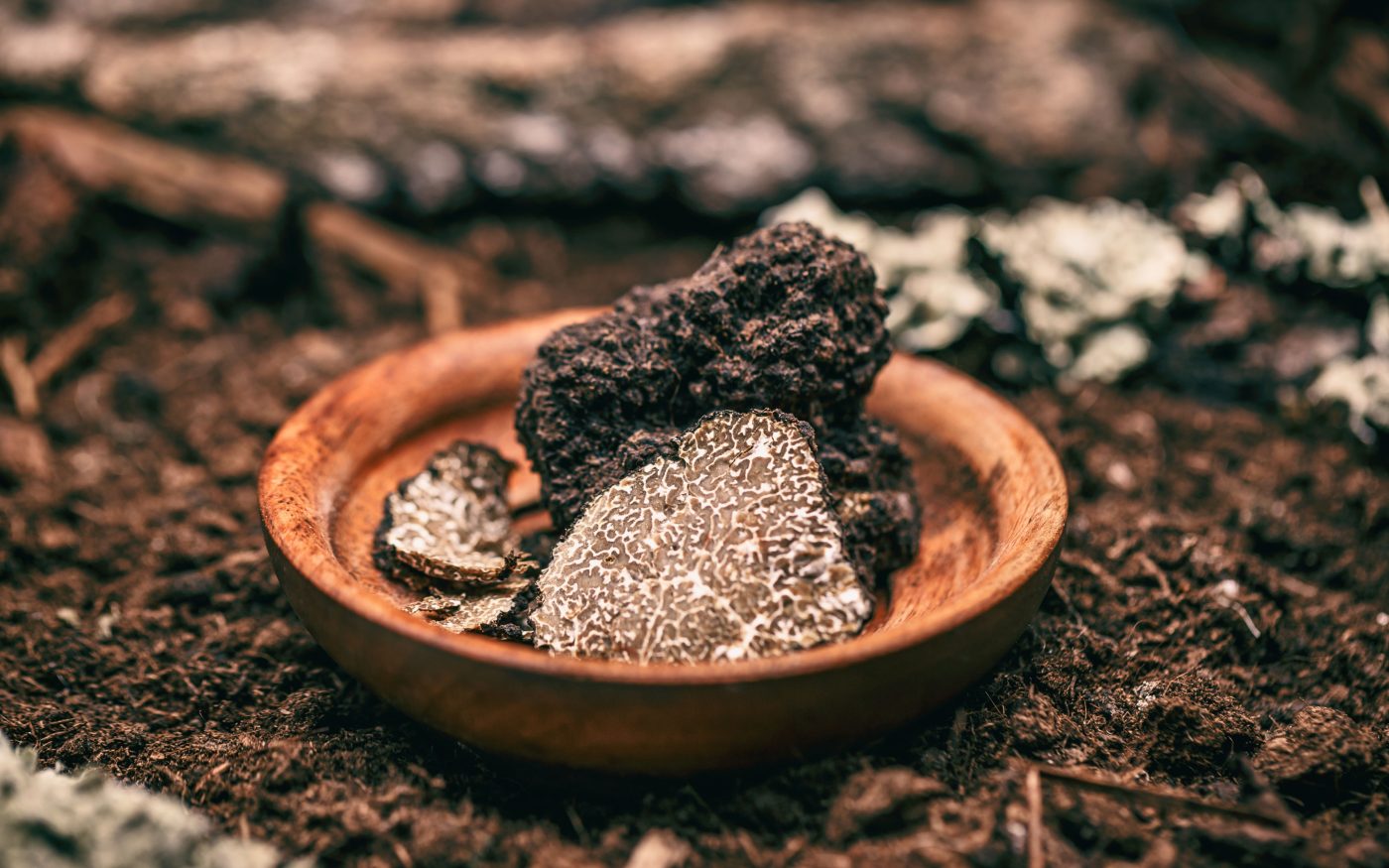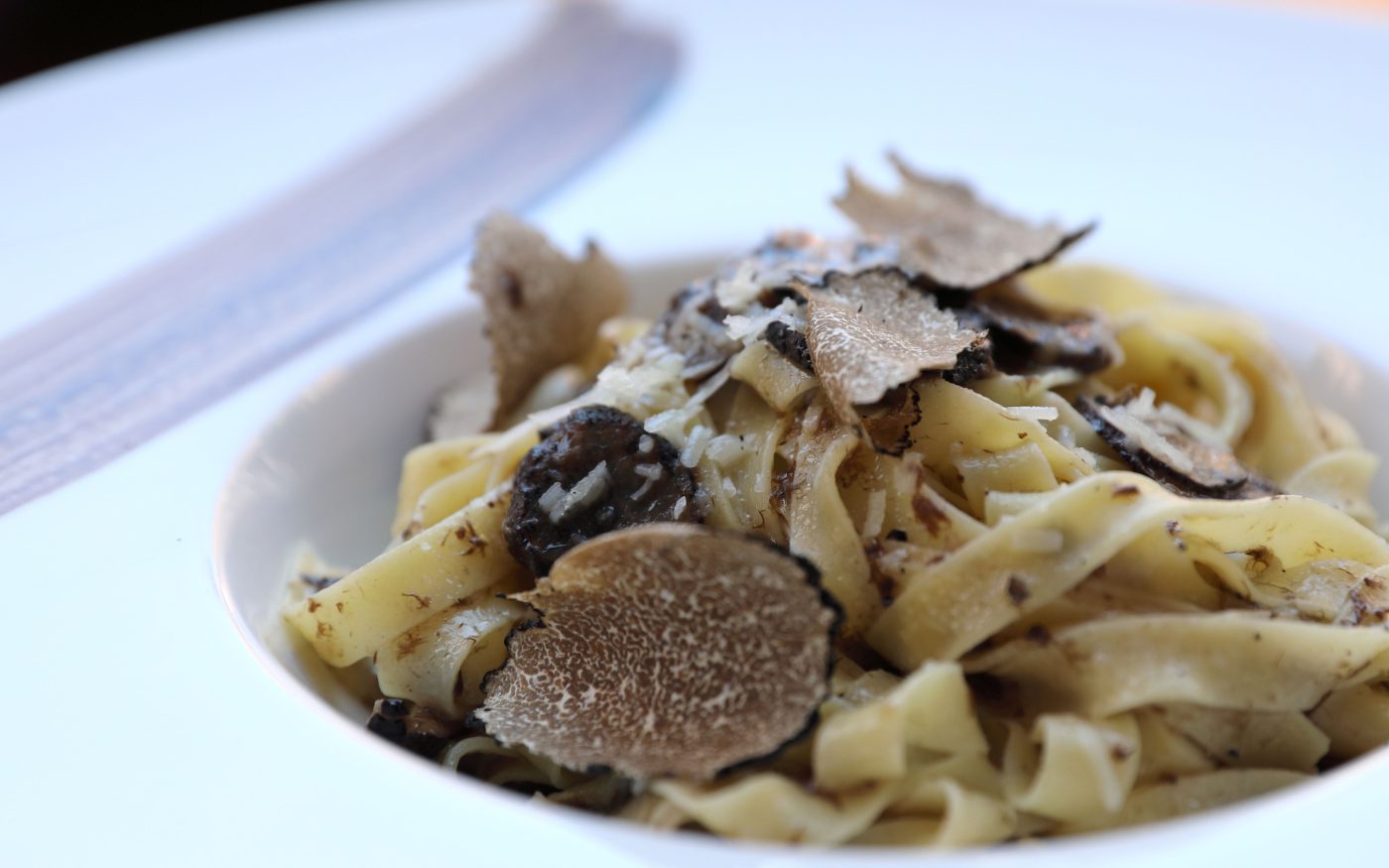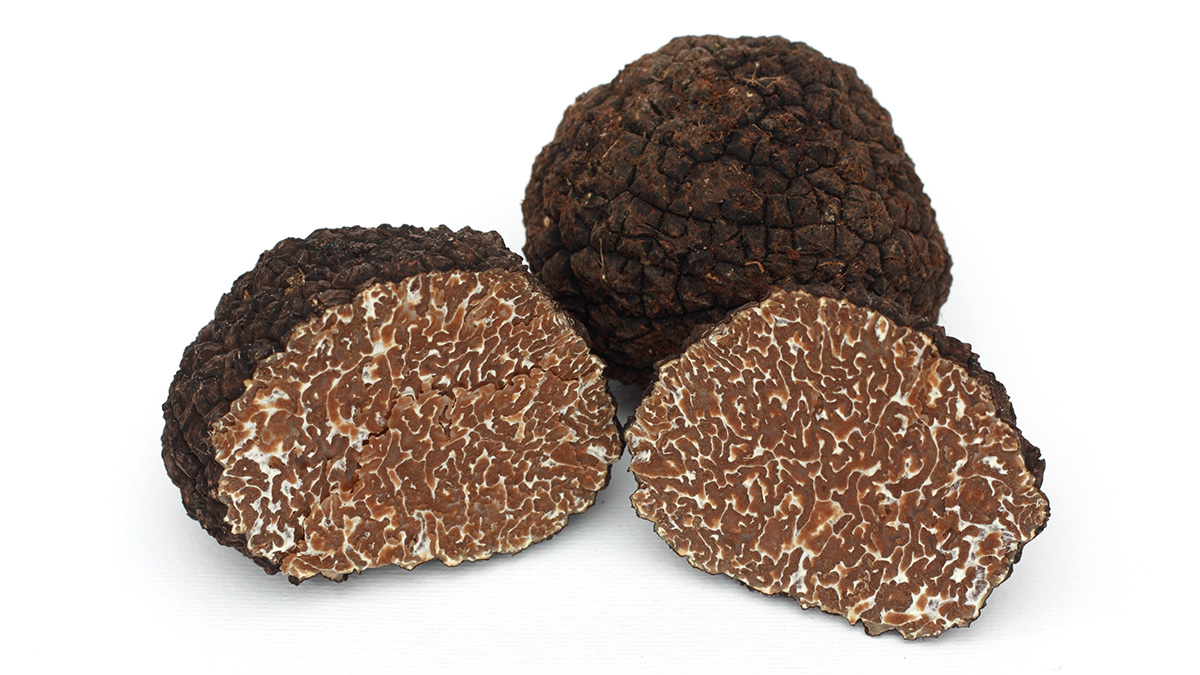Wandering in Langa
The Périgold Black Truffle Tuber Melanosporum Vittadini

For its enveloping aroma and passionate search, the prized Black Truffle, known as the “sweet truffle,” represents a true culinary gem that has fascinated the most refined palates for centuries.
But how does it grow? How to recognize it and how can it be best enhanced?
Here is the answers to all these questions!
The truffle is a hypogeous mushroom (i.e., it grows underground), and is prized for its intense aroma and unique flavor.
This delicacy, beloved by chefs and connoisseurs of gastronomy, develops in symbiosis with the roots of trees, such as oak, hazel, and poplar, creating one of the most sought-after treasures of world cuisine.

There are different varieties of truffles – each with distinct characteristics and scents – but all share a growth process hidden underground and a hunt that involves Trifulau experts and dogs trained for the need.
Due to its rare aromatic complexity, the truffle has always been considered a prized ingredient and is the undisputed protagonist in haute cuisine dishes, capable of giving a unique and exclusive touch to culinary preparations.
A delicacy so rare and precious that the city of Alba has dedicated an international fair to it.
The truffle consists of an outer part, called the peridium, which depending on the species can be smooth or rough, and vary from yellow to ochre to dark brown, also depending on its maturity.
Its interior, the gleba, is less compact and characterized by veins of filaments, which create small “rooms”-there are large cells, the asci.
The asci contain spores, which when they germinate create a new mutualistic symbiosis with plant roots, giving rise to the vegetative apparatus of the fungus. The truffle is in fact the fruiting body of the mycelium.
Tuber melanosporum Vittadini – scientific name for identifying this special fungus – grows entirely underground, in symbiosis with oaks, hazels, and limes and can be found at a depth of 5 to 30 centimeters or more-in soils well exposed to sunlight.

Its harvest is from December to March, which is why it is often found in winter recipes.
Visually, it has a round shape the size of a walnut or even larger, up to that of an orange (weighing up to a kilogram in some cases).
Its surface is irregular and full of small pyramid-shaped bulges, flat or somewhat lowered in the center, dark in color, toward shades of black (hence the name Melanosporum), with the presence of rust-colored spots.
Internally, the gleba is reddish-black or blackish-brown, with many thin, light purple lines. When exposed to air, these turn red, while with cooking, they turn black.
Its fragrance is very aromatic and pleasant, not too strong, reminiscent of the characteristic scents of woods, mushrooms, and moist soil.
Périgold Black Truffle is the star of the kitchen!
It is well suited both raw and cooked because it does not alter with cooking (unlike the white truffle), releasing its best aromas and flavors.

It is great for making risottos, pasta and sauces to spread on freshly toasted crostini.
You can also cook it along with roasts or use it raw, in flakes on raw meat, to give flavor to soups, polenta, purees, and pan-fried eggs, giving them a special taste.
Aren’t these ideas enough? You can also find inspiration in this article on recipes to make at home with truffles!
The fine black truffle is a rare and precious product that requires great care, and its cleaning is a delicate art.
To clean it well, you will need a toothbrush with soft or medium bristles, a damp cloth and fresh water.
Its brushing will need to be careful and under very little water to remove most of the soil, then wipe it slowly with a damp cloth and then dry it in paper towels.
Once it has been cleaned well, it can be stored if it is not consumed immediately.
How to do it? It can be placed dry inside a glass jar after wrapping it in paper towels, checking daily that there is not too much moisture that would invariably create mold.
The prized black truffle is not just an ingredient, but a symbol of culinary prestige, an ode to nature and its most prized gift.
Its presence in kitchens and tables expresses a love of tradition, excellence and the pursuit of perfection, making it an indispensable gastronomic treasure.
